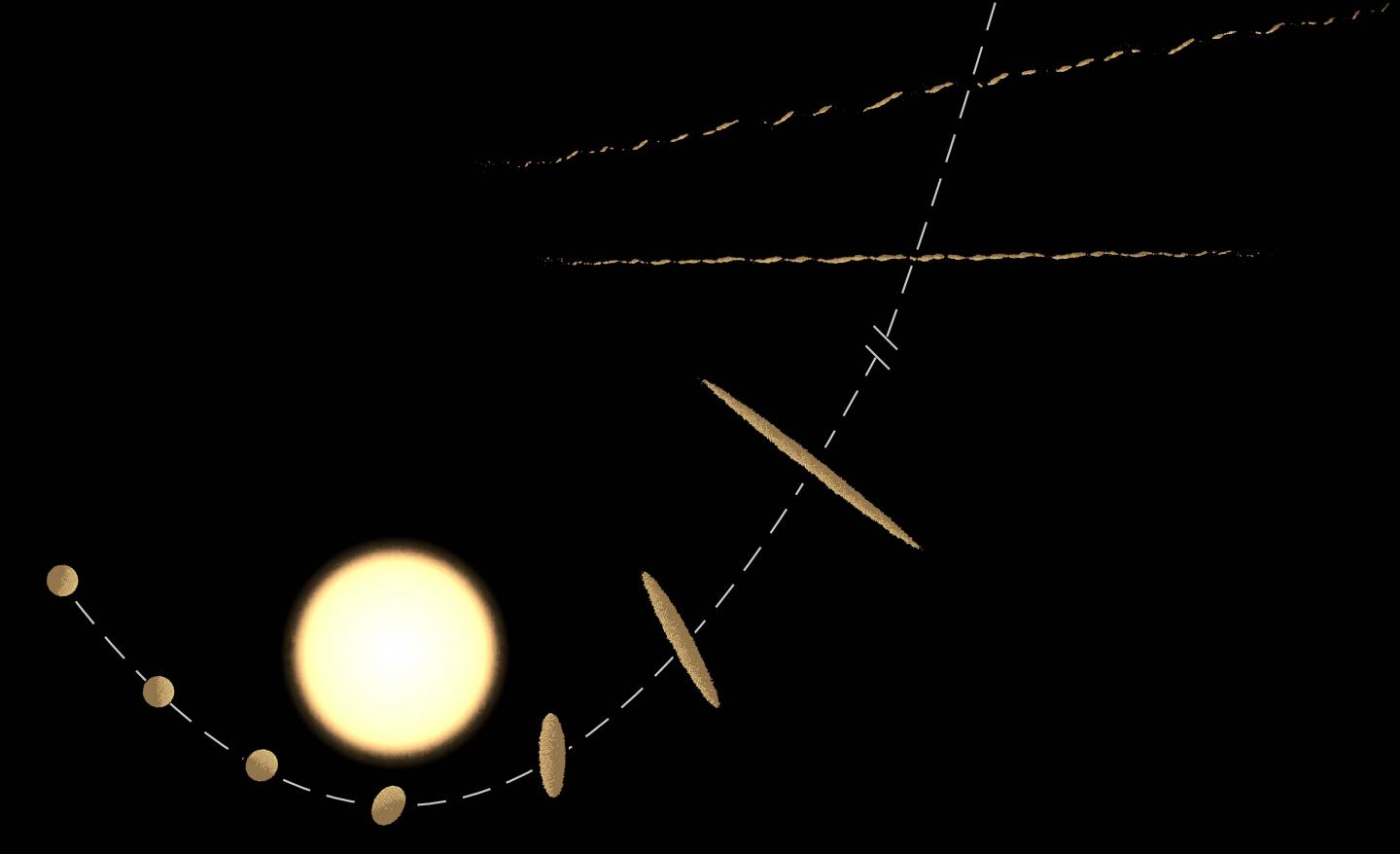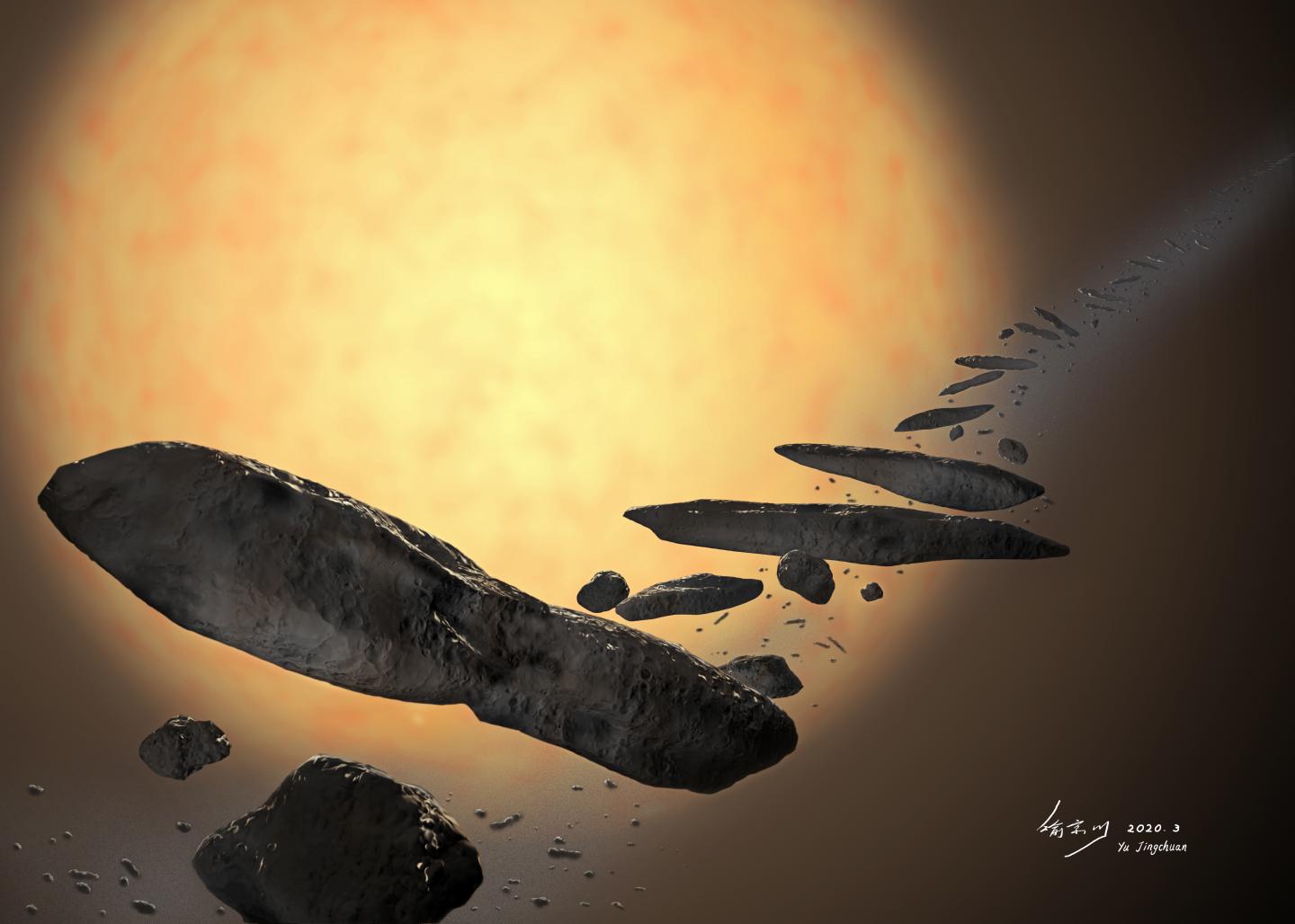Two years ago, scientists found the first visitor from interstellar space ever spotted inside the solar system. The trajectory of the elongated object, named ʻOumuamua, showed that it originated in an unknown star system that must have ejected it a long time ago.
Since then, debates have raged about the formation of this blunt-shaped traveler, including speculation that it is a UFO (note: it’s not aliens).
Now, scientists propose that ʻOumuamua was part of a larger celestial body that was whittled into oblong splinters during tight passes with its host star. The star’s tidal forces then booted it into the interstellar wilds, an origin story that may be common for interstellar objects (ISOs) in our galaxy, according to a study published on Monday in Nature Astronomy.
“A unified formation theory has yet to comprehensively link all ‘Oumuamua’s puzzling characteristics,” said co-authors Yun Zhang, a planetary scientist at the National Astronomical Observatories of Chinese Academy of Sciences, and Douglas Lin, an astronomer at UC Santa Cruz, in the study.
“Here we show by numerical simulations that ‘Oumuamua-like ISOs can be prolifically produced through extensive tidal fragmentation and ejected during close encounters of their volatile-rich parent bodies with their host stars,” the team added.

Scientists have been ruminating about ʻOumuamua’s backstory ever since the object was first spotted in October 2017 by the Pan-STARRS telescope in Hawaii. At that point, the object had already made its closest pass to the Sun and was hurtling back out of the solar system.
Weirdly, ʻOumuamua is about 10 times longer than it is wide, creating bizarre proportions that don’t match any known objects inside our own solar system. Scientists also searched for ice and gas trailing the object, a sign it might be a comet, but saw nothing. Instead, ʻOumuamua appears to have a dark reddish color indicating that it is rich in metals and organic compounds. While it may have once been a comet, the object is now considered an asteroid.
In order to square all of these unusual features, Zhang and Lin ran high-resolution computer simulations of various celestial bodies—such as comets, debris, or even planets—approaching stars. The results predicted that a star about half the size of the Sun could shred large objects into these fragments, some of which would have even more elongated axis ratios than ʻOumuamua (perhaps more of a joint shape than a blunt shape).
Close stellar encounters would also cause the surface of the shards to melt, then solidify once the objects receded from the intense heat and radiation of the star. This process could essentially coat the objects in natural glue, causing an “enhancement of cohesion” that offers “a possible formation scenario for the reported shape, size, and surface features of ‘Oumuamua,” according to the study.

A single star system may eject trillions of these objects over the course of several billion years, the team estimated, so interstellar space is no doubt filled with shattered travelers. Indeed, last year, scientists discovered another visitor from interstellar space called comet 2I/Borisov, and they expect to spot many more in the coming decades.
Ejected asteroids, comets, and even planets are drifting across the galaxy, occasionally getting captured by the gravity of random star systems. It’s possible that they may carry and distribute the ingredients for life, such as water and organic compounds, “between stars near and far,” Zhang and Lin said in the study.
“Since these sojourns pass through the domains of habitable zones, the prospect of panspermia”—the theory that life originates from extraterrestrial compounds—“cannot be ruled out,” the team concluded.
from VICE https://ift.tt/3b9EiTM
via cheap web hosting
No comments:
Post a Comment